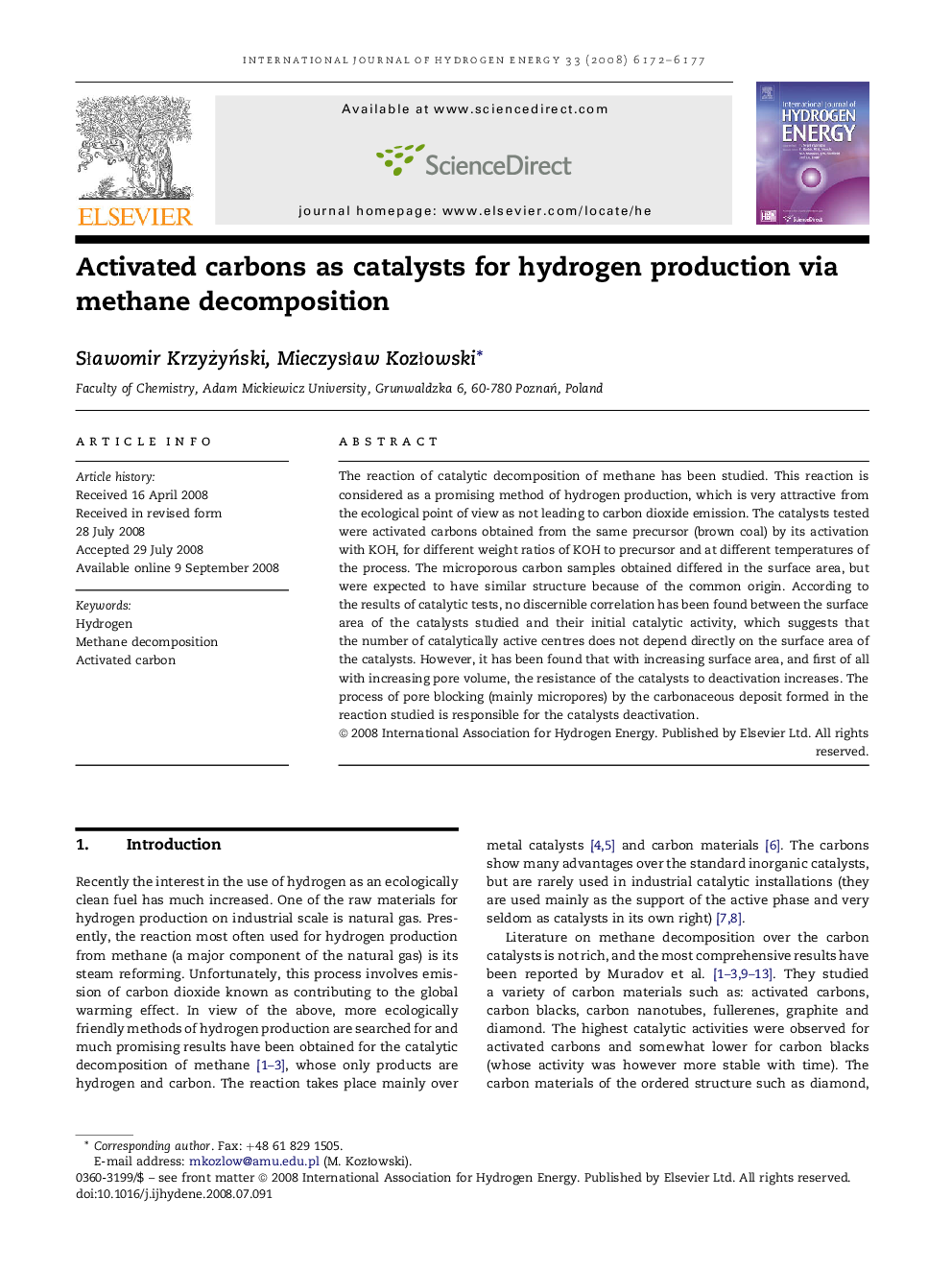| Article ID | Journal | Published Year | Pages | File Type |
|---|---|---|---|---|
| 1283617 | International Journal of Hydrogen Energy | 2008 | 6 Pages |
The reaction of catalytic decomposition of methane has been studied. This reaction is considered as a promising method of hydrogen production, which is very attractive from the ecological point of view as not leading to carbon dioxide emission. The catalysts tested were activated carbons obtained from the same precursor (brown coal) by its activation with KOH, for different weight ratios of KOH to precursor and at different temperatures of the process. The microporous carbon samples obtained differed in the surface area, but were expected to have similar structure because of the common origin. According to the results of catalytic tests, no discernible correlation has been found between the surface area of the catalysts studied and their initial catalytic activity, which suggests that the number of catalytically active centres does not depend directly on the surface area of the catalysts. However, it has been found that with increasing surface area, and first of all with increasing pore volume, the resistance of the catalysts to deactivation increases. The process of pore blocking (mainly micropores) by the carbonaceous deposit formed in the reaction studied is responsible for the catalysts deactivation.
